Start: Sayulita, Nayarit, 10:00 am
End: Guadalajara, Jalisco, 7:30 pm
Mileage: 242
From here my plan was to head to Guadalajara in hopes of finding a new motorcycle tire and stopping by the town of Tequila on the way. I had breakfast at Coco Banana, in the center of Sayulita, and for a change I got some French-toast. Besides the terribly slow service, the food was decent. Lots of Americans were having breakfast as well and this being the low season, I could imagine how crowded Sayulita must get during the peak winter season.
Being so close to Puerto Vallarta, I figured I might as well have a look. It looked like a nice city, with cobble stone streets and palm tree line boardwalks. But I wasn't enjoying the crazy traffic through town. I headed back north to catch Hwy 15 towards the town of Tequila. From Hwy 200, there's only a Cuota road from there to Hwy 15, without back-tracking a lot. But it only cost 32 Pesos, so not bad.
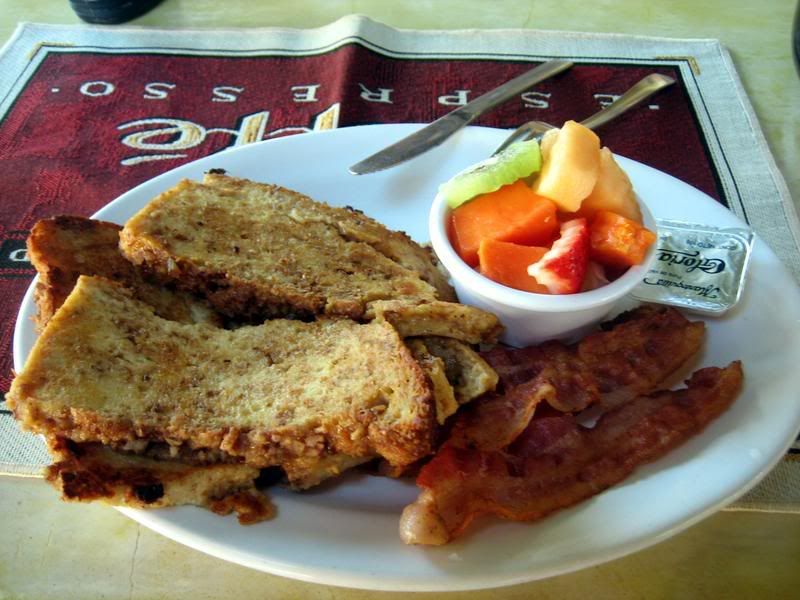
Breakfast at the Choco Banana in the main square in Sayulita of French toast and bacon.

Taking a quick look at Puerto Vallarta, since I was so close. Nice place.
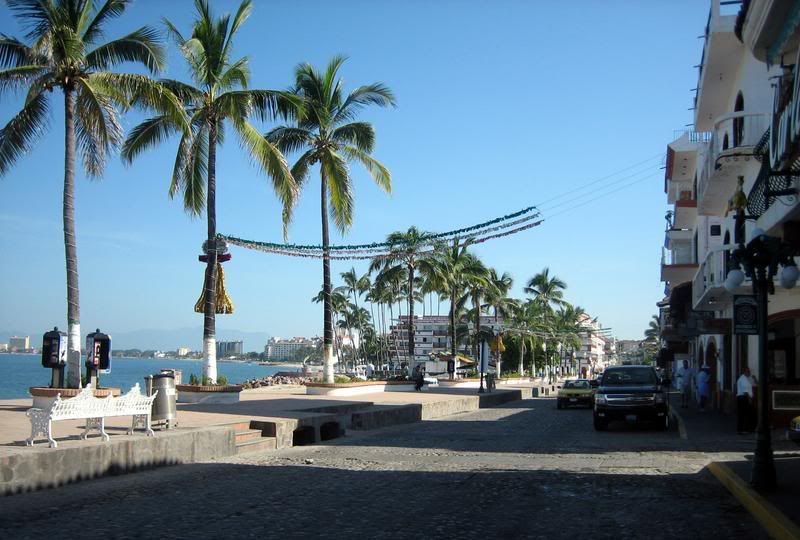
Looks very much like how a seaside town should be: coconut trees, cobble stone streets (a pain for motorcycles) and nice buildings too.
Hwy 15 Libre to Tequila was a nice ride with the tarmac twisting over the hills that too with reduced traffic, as the Cuota runs right next to the Libre. I could tell I was getting close to Tequila by seeing all the Blue Agave plants being grown all over the place: by the roadside, in little fields on steep slopes and on massive farms.
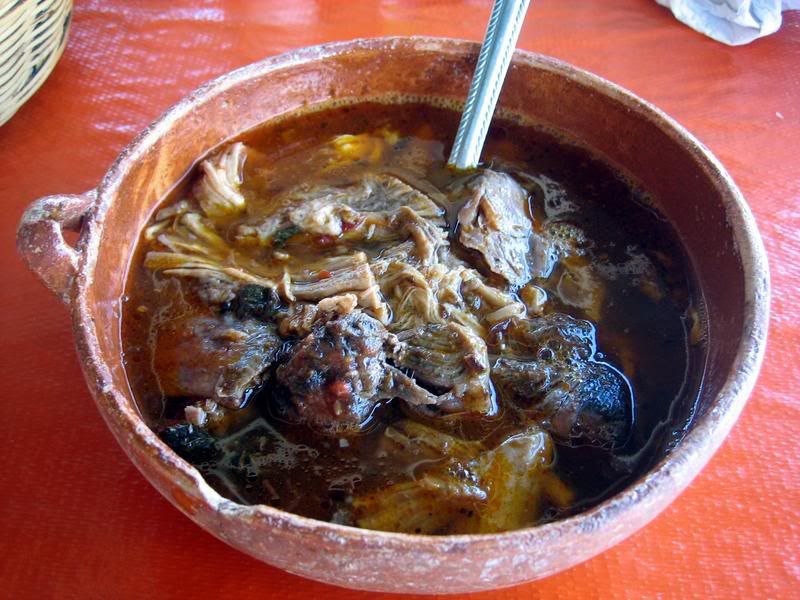
Enjoying some Birria on the way to Guadalajara. This is basically grilled pork stew, which was so tasty that I sought it out for the next couple meals. It's distinctive of this region. Very nice clay pot that it was served in.
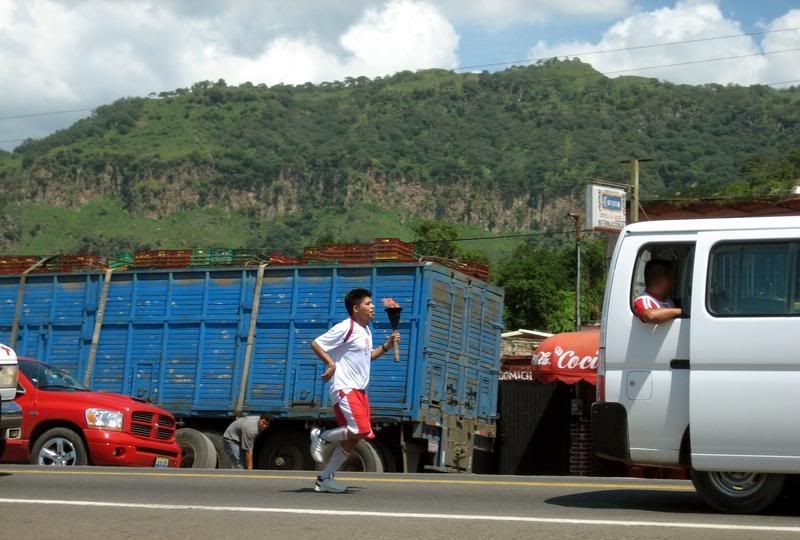
A torch runner. Perhaps they were practicing for the next round of the Olympic torch run. The runner was following a van with other runners in there, who probably took turns with the torch. An ambulance and a police car followed. They were also holding up traffic for a mile or more.

Amidst all the green mountains, I saw lots of these sharp edged black rocks… perhaps they're volcanic in nature coming from hot magma (Austin Powers). But Mexico is known to have some active volcanos as it's part of the Pacific Ring of Fire.
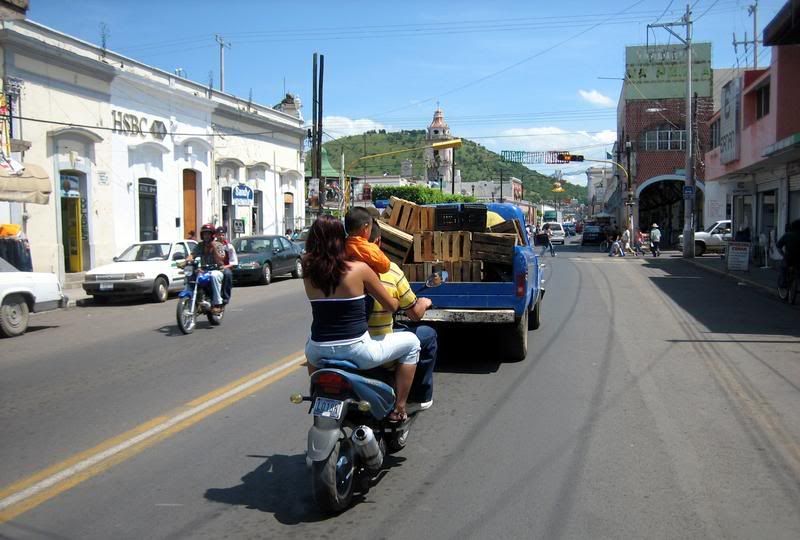
Two wheels - transportation for the whole family. Forget helmets and safety gear, if you can get on, hold on. I must've looked like someone from space with all my safety gear on.
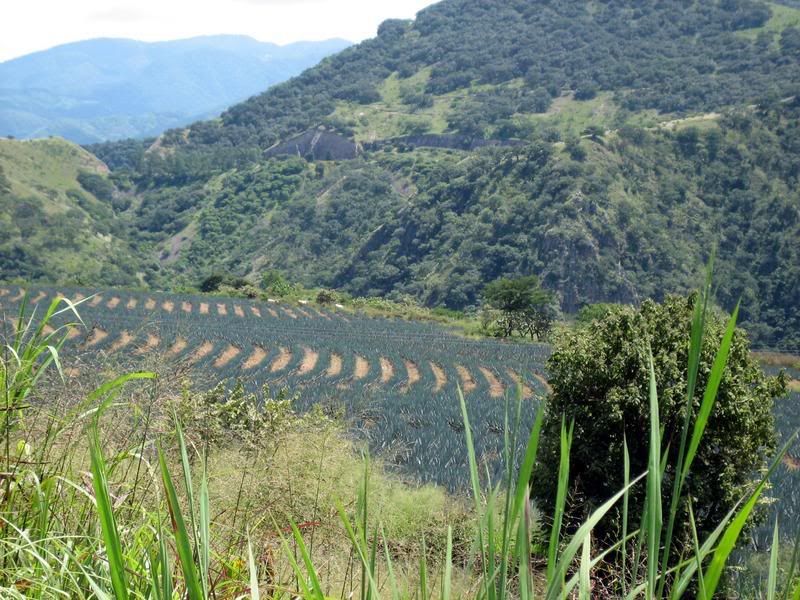
Blue Agave fields indicating that I was getting close to the town of Tequila.
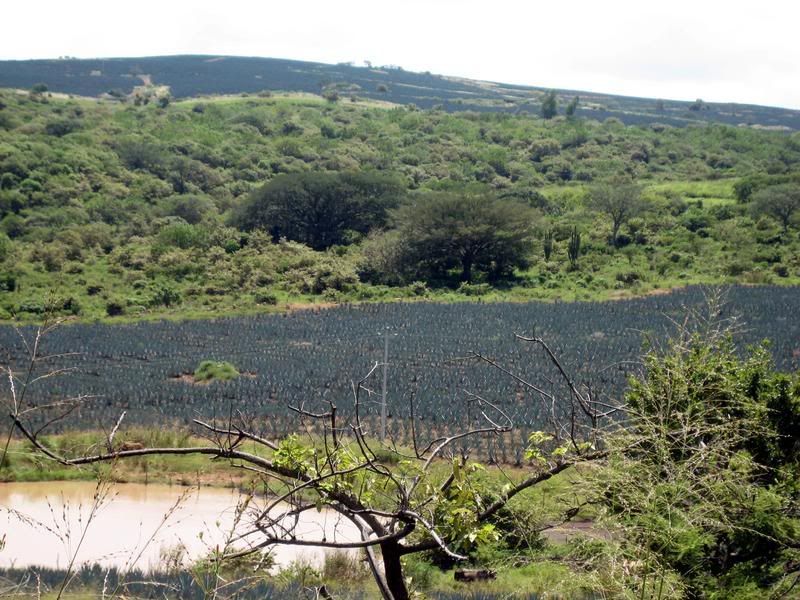
This stuff was growing everywhere in these hills.
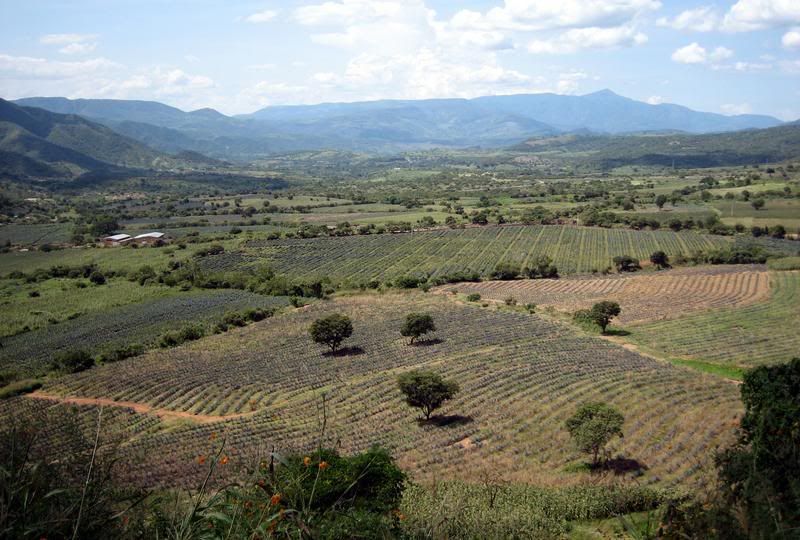
It takes 10 years for the plant to mature before it can be made into Tequila, so lots of it is planted all over the place.
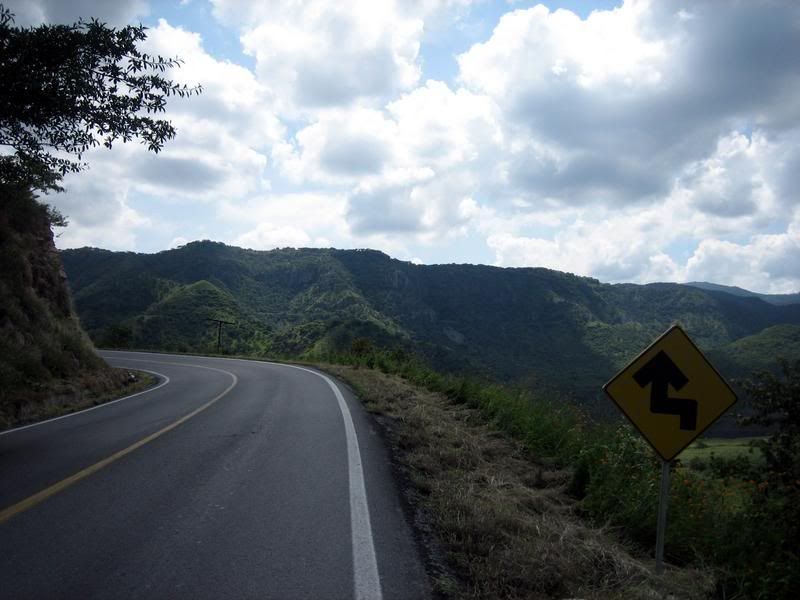
Some twisties near the town of tequila.
I made it in time to take the last tour through the Jose Cuervo distillery. The tour, which is in Spanish, costs $10 and includes a small margarita at the end. I wasn't too fazed about the tour being in Spanish, since I already knew how Tequila was produced (thanx History Channel), but wanted to see the distillery anyway. With the few words and phrases I had learnt in Spanish I could understand most of the tour, which was nicely setup. She took us through the various steps of distillation and we got to try samples from different stages in the process. One sampling was so strong it must've been early in the process; it tasted like pure Ethanol, resembling Ever Clear. The sampling of the three-year aged Tequila was quite tasty. People on the tour were asking for seconds and thirds, while I here had to continue riding my bike for another hour into Guadalajara.
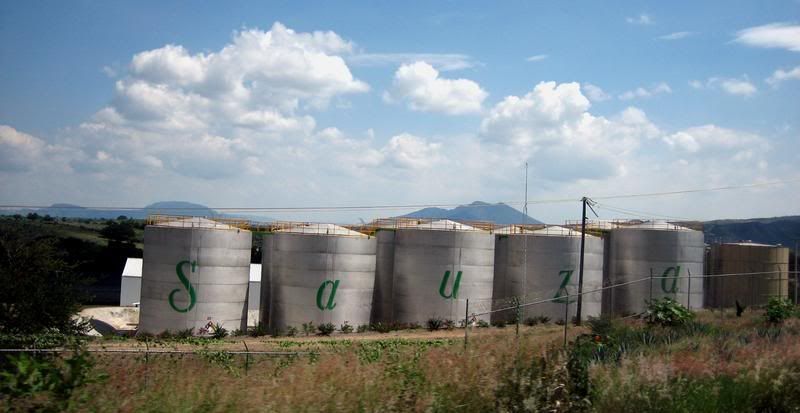
Damn, that's a lot of tequila in storage there.
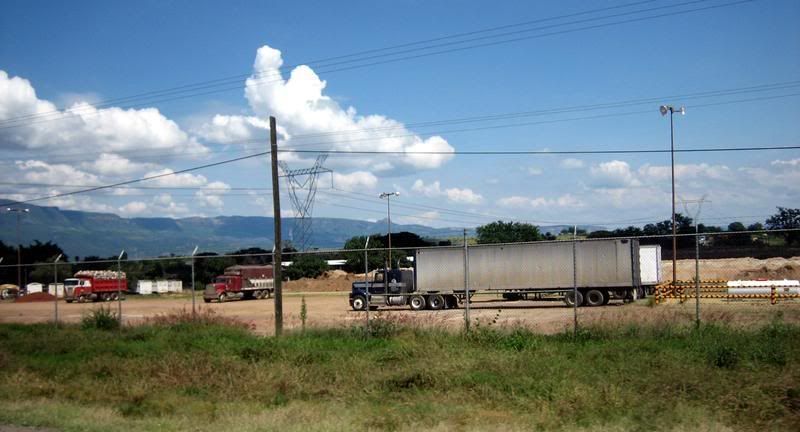
The trucks off-loading the pinas (the heart of the Blue Agave plant, which is used to make tequila).
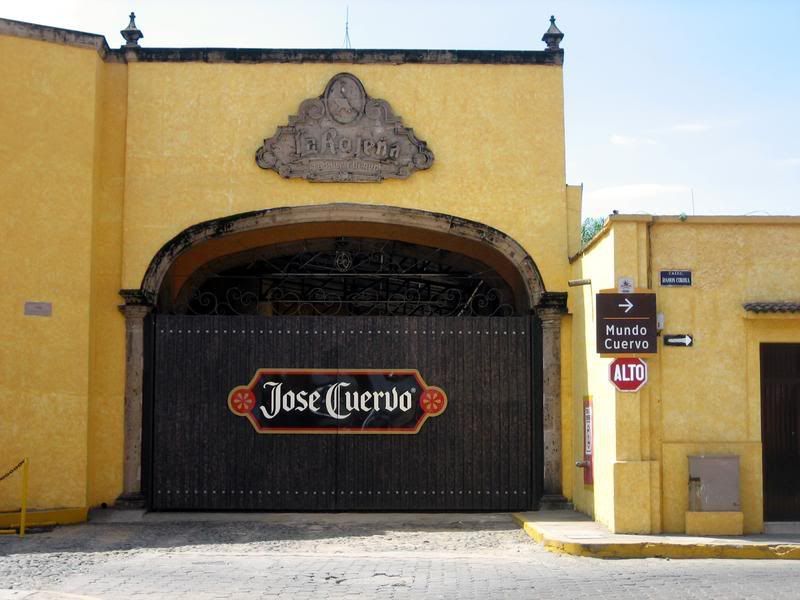
The Jose Cuervo distillery in downtown Tequila. I was here to take a tour of the site.

The distillery is on the left side here with lots of nice restaurants and cafes flanking the other side.
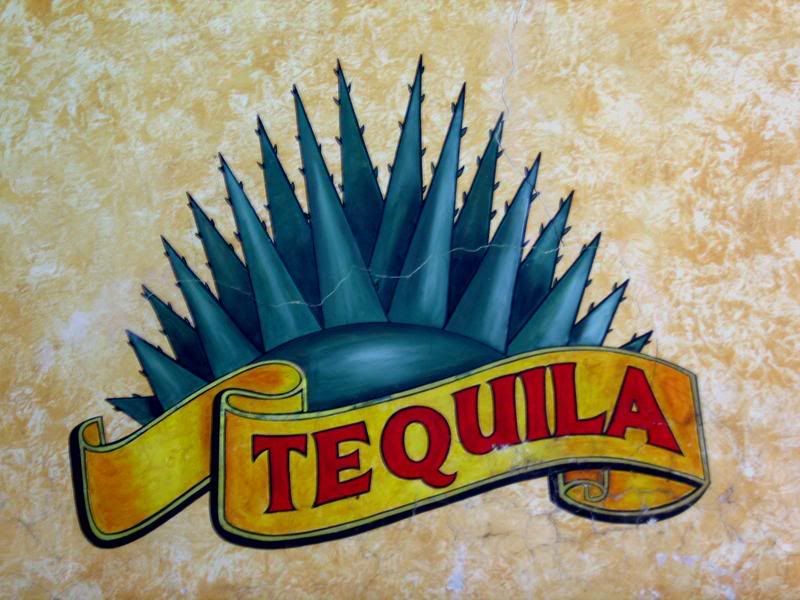
Tequillllllla!
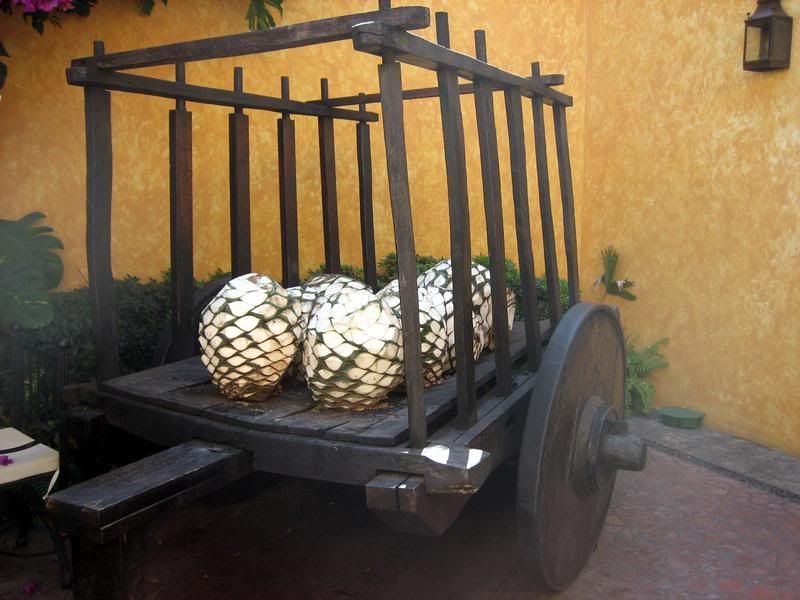
Pinas with the characteristic blue leaves shopped off. This is how they were delivered from the fields back in the day.
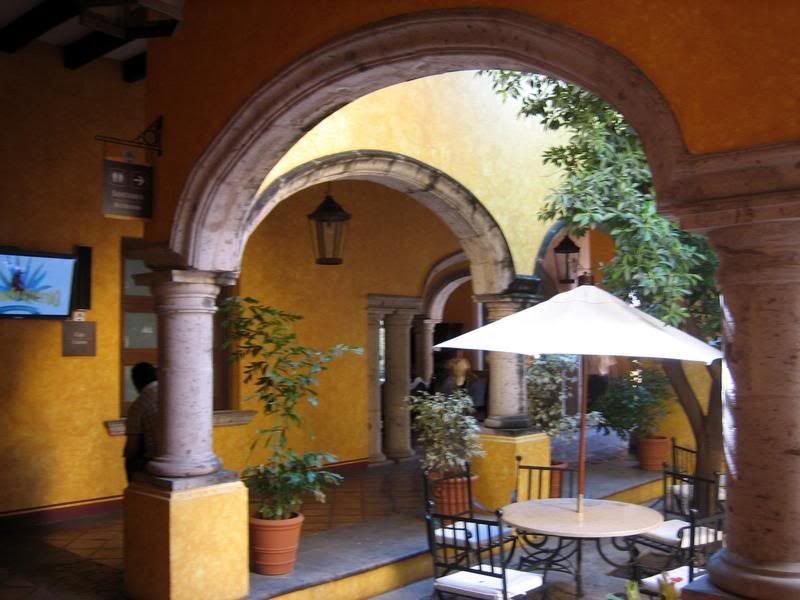
Touring the Cuervo facility.
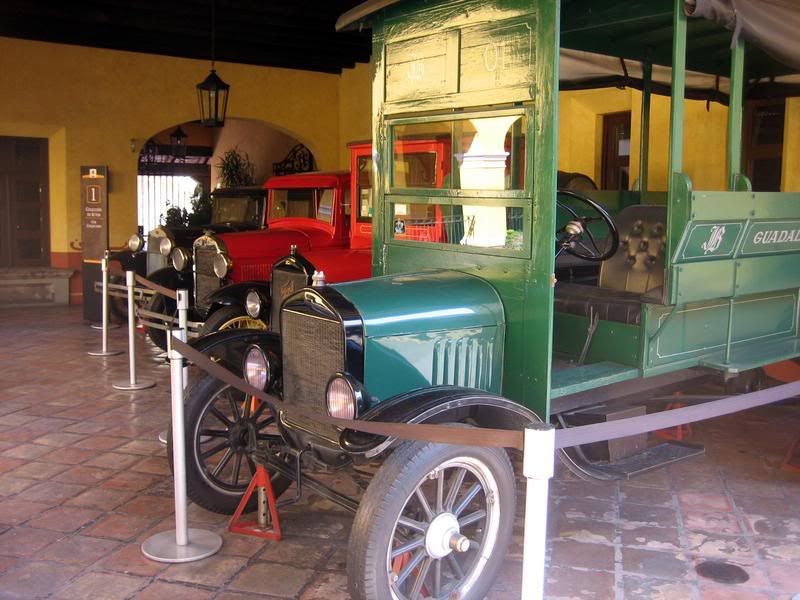
A fleet of old Ford trucks that were used in the distribution of the finished product. Just like Whiskey or any good liquor, its success is partly down to its distribution.

Some of the tools used to harvest the Blue Agave plant.
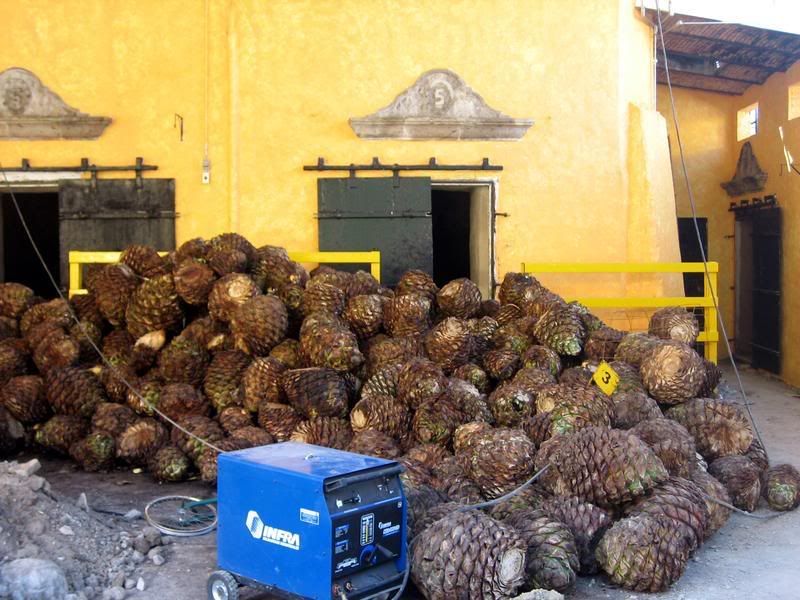
The pinas after being cooked in the ovens for 36 hours. I think it's cooked to release the sugars in the juice.
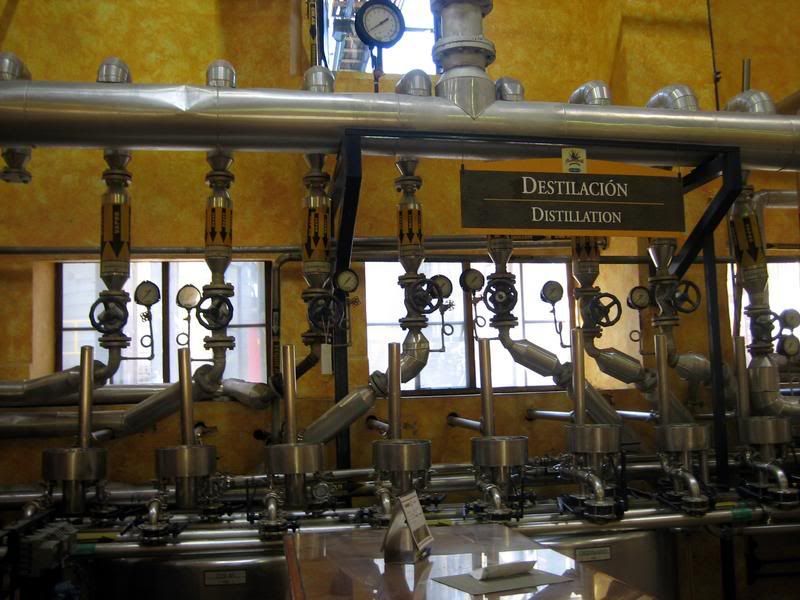
After fermentation, it is distilled twice.
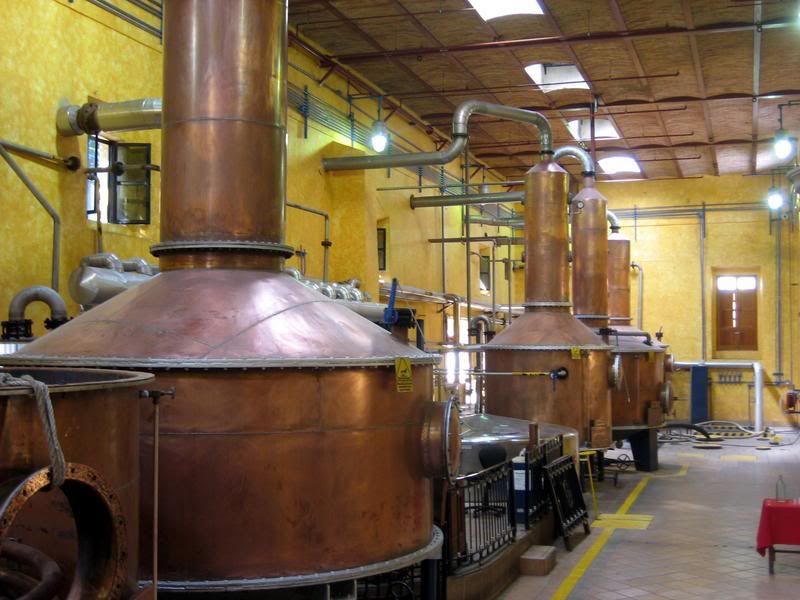
Distillation tanks.
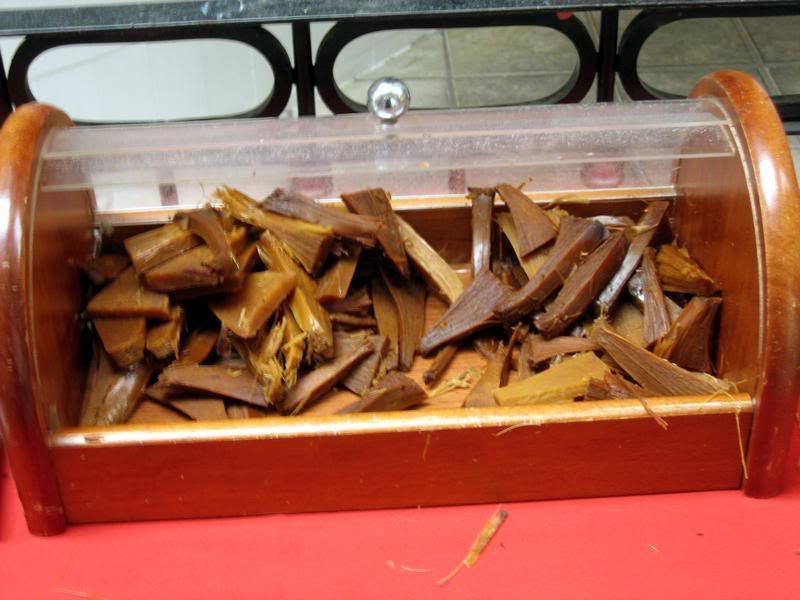
Pieces of the Blue Agave plant after being cooked in the ovens. These were samples for people on the tour. It's not bad, a caramel flavor, but you have to spit out the leaves.
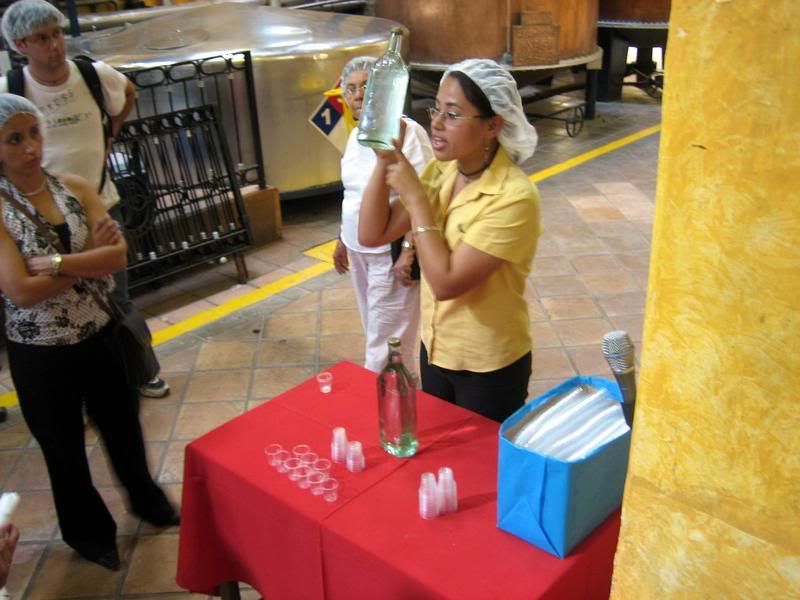
Our tour guide giving us samples of product that either wasn't distilled fully or wasn't diluted yet. It tasted like pure ethanol (like Ever Clear).

Tequila being aged in wooden barrels. The final product determines how long the Blanco Tequila is to be aged.
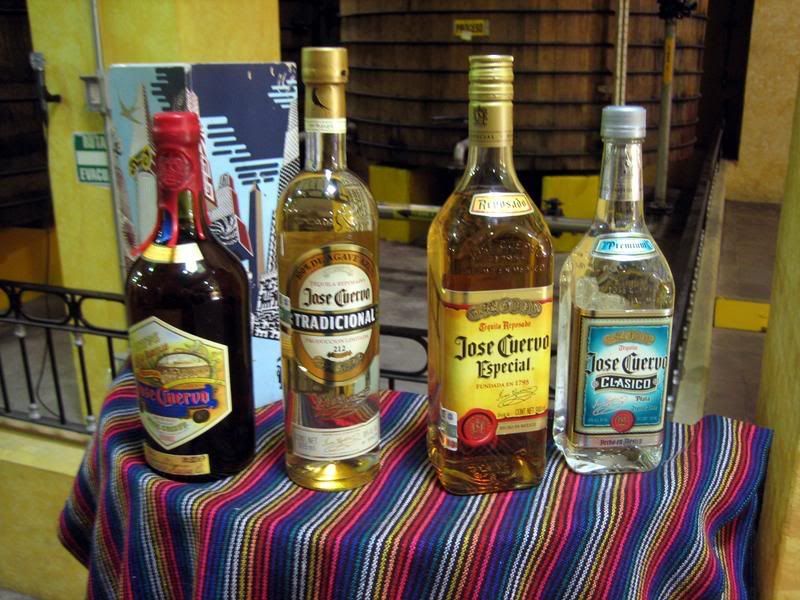
The full Cuervo product range. The Especial is their lowest quality (and biggest seller) and has only 51% agave instead of 100% like the other products offered.
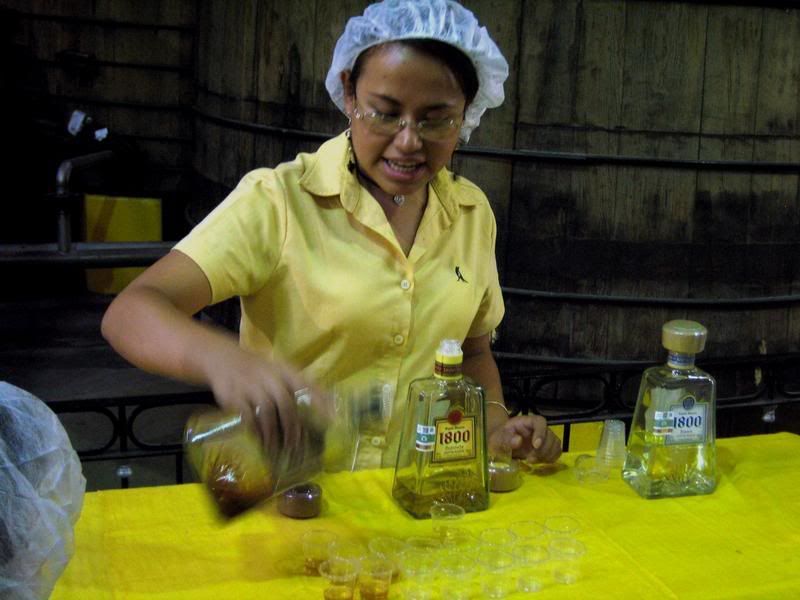
Pouring shots of their top of the line brand, 1800. We were sampling the 3 year aged Tequila, which tastes really smooth and nice.
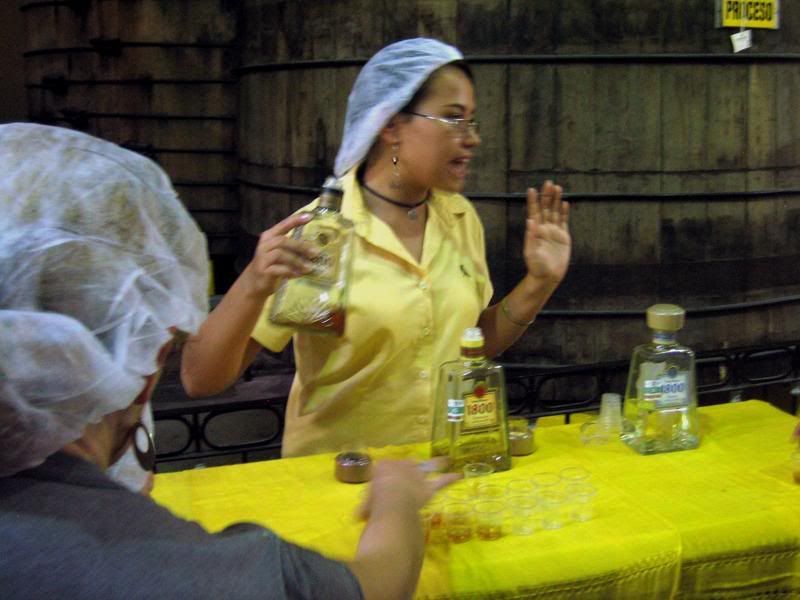
'We are not responsible if you have to drive after this…'
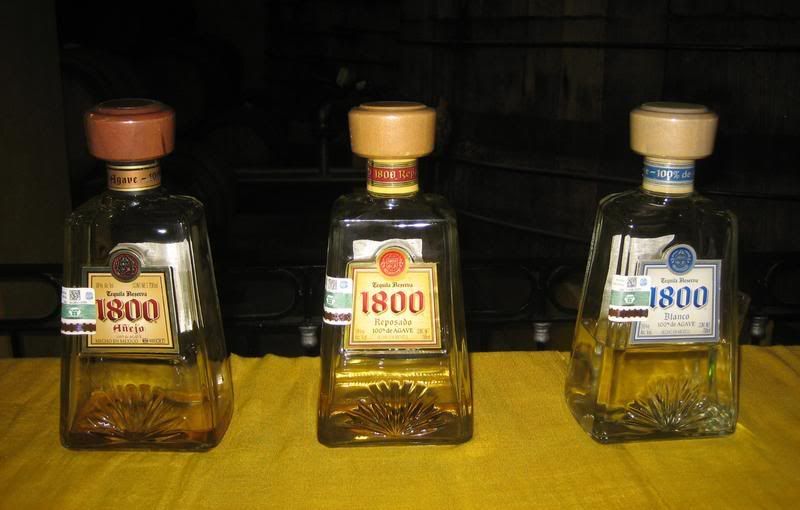
Left to Right: 3 year, 2 year and 1 year aged Tequila.
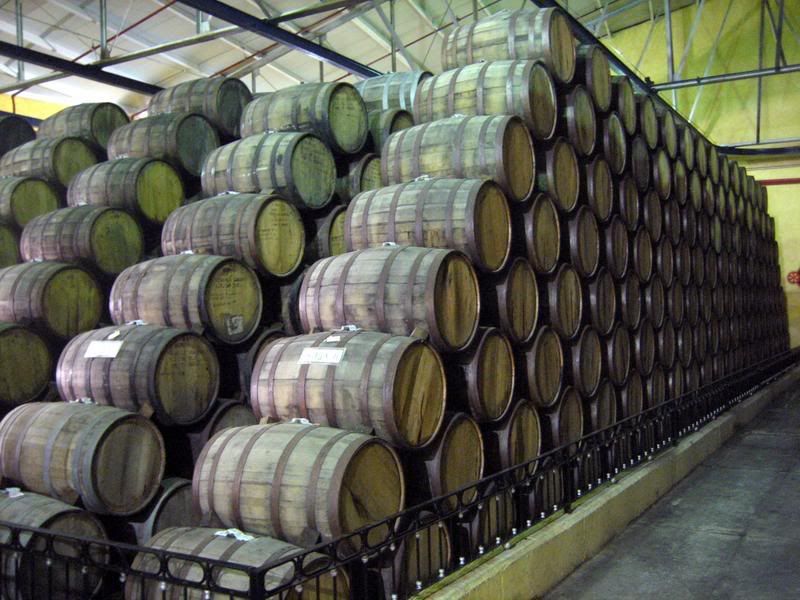
I should've swiped a barrel and strapped it to the bike. I could've even used it as fuel…
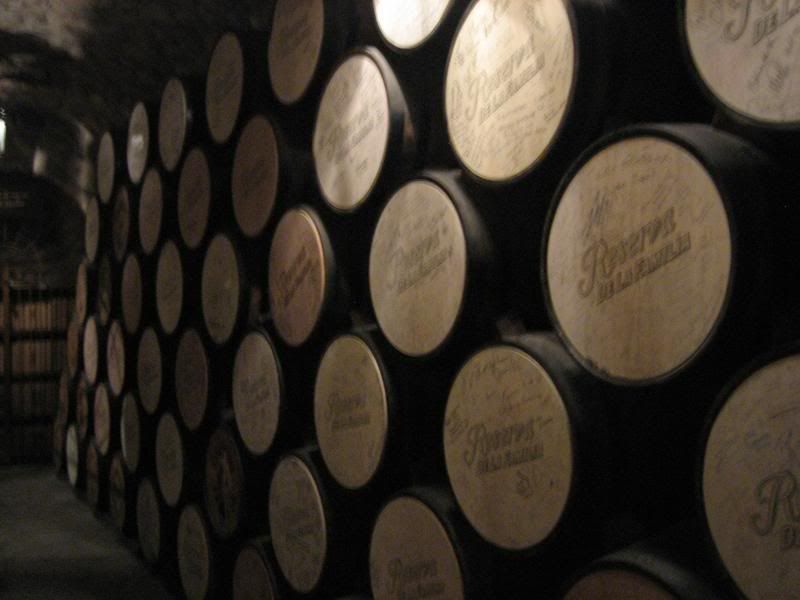
Special reserve Tequila that's being aged a long while in the cool cellar below the main distillery.
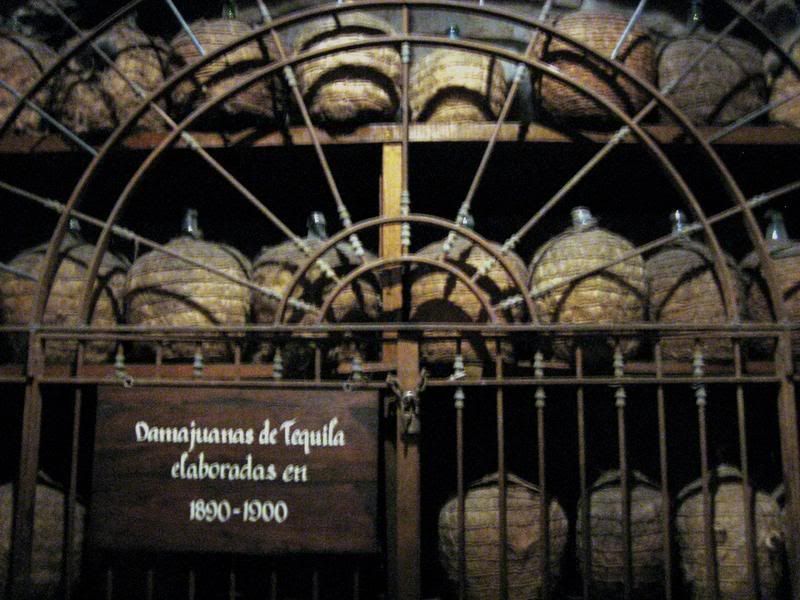
I'm not sure if those are actual pinas or bottled Tequila from more than a 100 years ago.
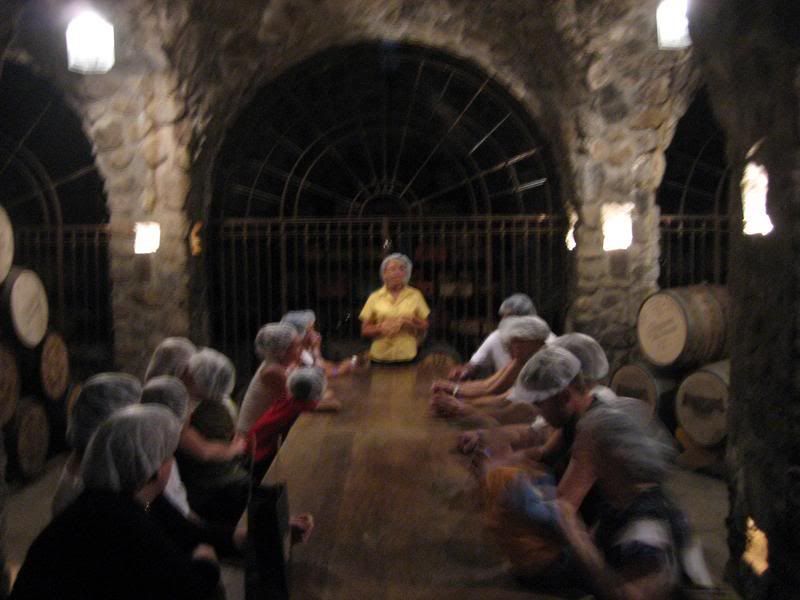
Ending the tour in the cellar. The tour is in Spanish but I could follow along and understand the basics. It cost $10 and you even get a small really tasty margarita at the bar at the end.
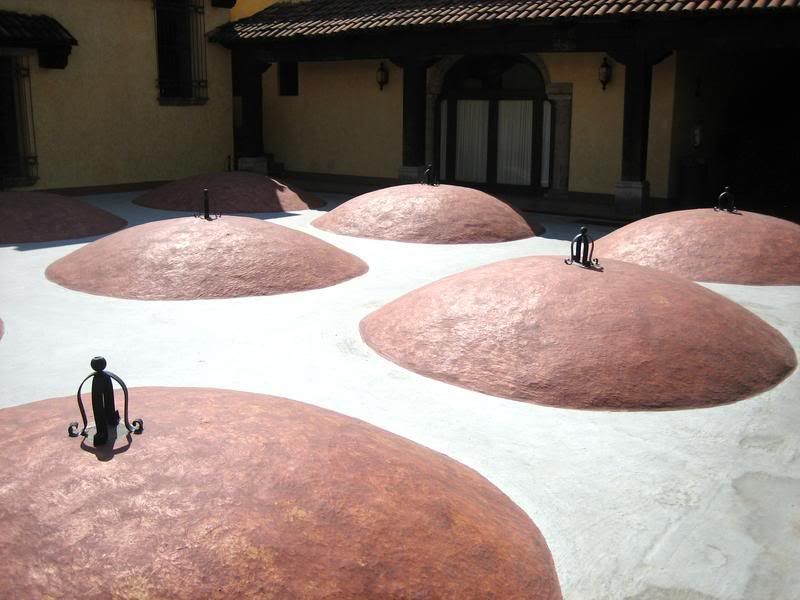
The domes from the cellar sticking out above ground.
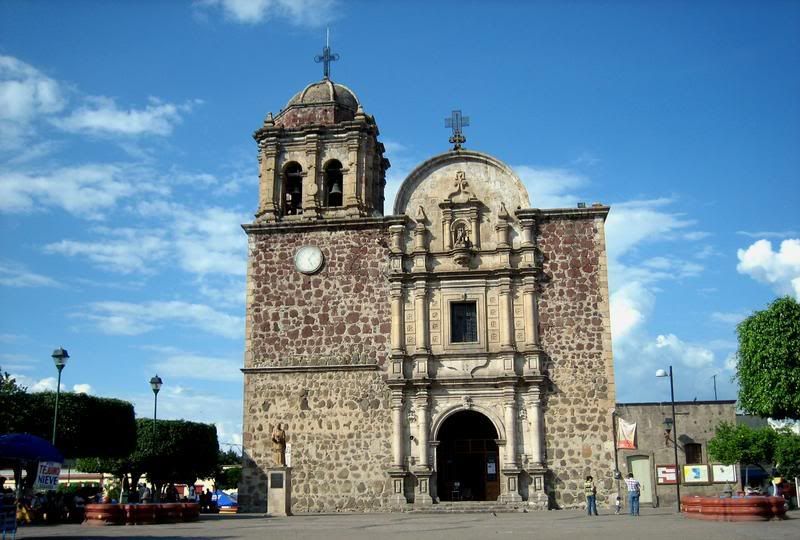
The chapel in the main square of the town of Tequila.
After the tasty margarita at the end, and making sure I wasn't tipsy in the least bit, I continued on to Guadalajara. Not knowing were the tire shops would be, I chose to stay near the Centro as that's where most of the hostels and cheap hotels are also located. The first three hotels I wanted to stay at from the LP guide book were all closed for the low season. The next one that was open was Hostal de Maria, part of the Hostelling International chain, which ensures certain minimum standards at numerous hostels worldwide. I've stayed with them in Europe and even in parts of the US. A dorm bed was $14 and being the only guest at the hostel, it was like having a private room. I also did some laundry at $4 a load. The bathrooms were very clean and another good thing about these hostels is that they usually have free Internet for their guests.
I took a walk to the Centro in hopes of finding some Birria, but most of the restaurants were closed by 8:30 pm. Some of the streets downtown were closed off to traffic and provided a nice promenade, which was mostly occupied by couples. I figured downtown must be one of the places they could hang out at since they probably couldn't go home with their girlfriends or boyfriends. The only restaurant open besides McDonalds was a Chinese buffet place for 38 Pesos. Food wasn't bad, but nothing great either. I found it amusing that the restaurant owner was yelling at her kids in Spanish instead of Cantonese. And here I was, an Indian speaking Spanish to a Chinese woman. Globalization, you gotta love it. I do know a few phrases in Mandarin, but that wouldn't have helped in this situation.
Back at the hostel, I chatted up with Rodolfo, the night receptionist. He said he was a car mechanic by day and loved working on cars. He was getting quite philosophical about the internal combustion engine. Excellent. He said he mainly worked on Nissan Sentras, which is the most common car in Mexico. I would say that one out of five cars I saw was a Sentra of some kind and they had about five generations of the car on the road. They were being used as taxis, police cars and personal cars too. Some of the older models were being local marketed with the name of Tsuru. Rodolfo said the cars were built really well and they kept going for many years. I guess it's one of those things where Nissan got its foothold early in Mexico's booming car days and now they really can't mess it up, like the Honda Accord and Toyota Camry in the US. Rodolfo said he'd love to travel once he saves up enough money and wants to ride around Mexico on a Harley Road King. The bike choice might be influenced by what most people consider to be bikes or maybe it's Hollywood. Someone needs to show him the adventure riding movie, Long Way Round.

The broad avenues of the big city of Guadalajara. I was here to find a dealer to change my rear tire, then head back down to the coast.
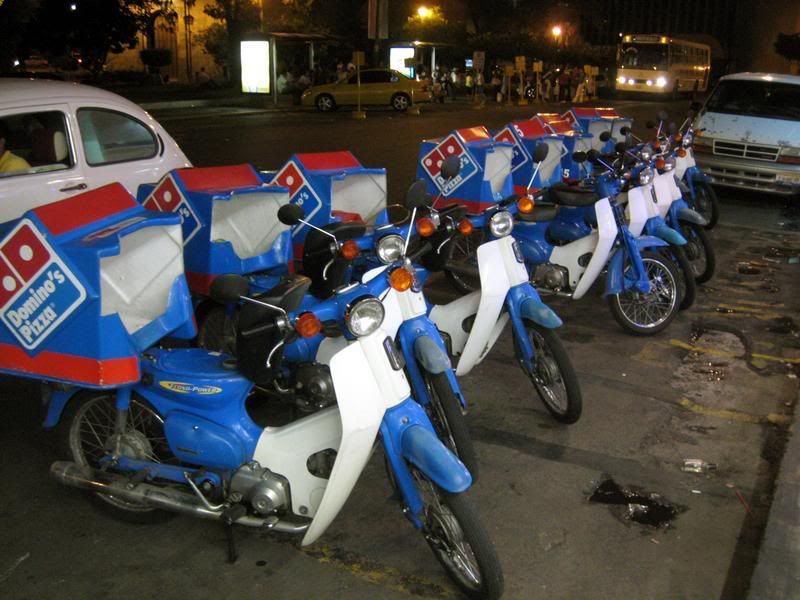
Something you don't find in the US is pizzas being delivered by motorcycles. Happens in India too.
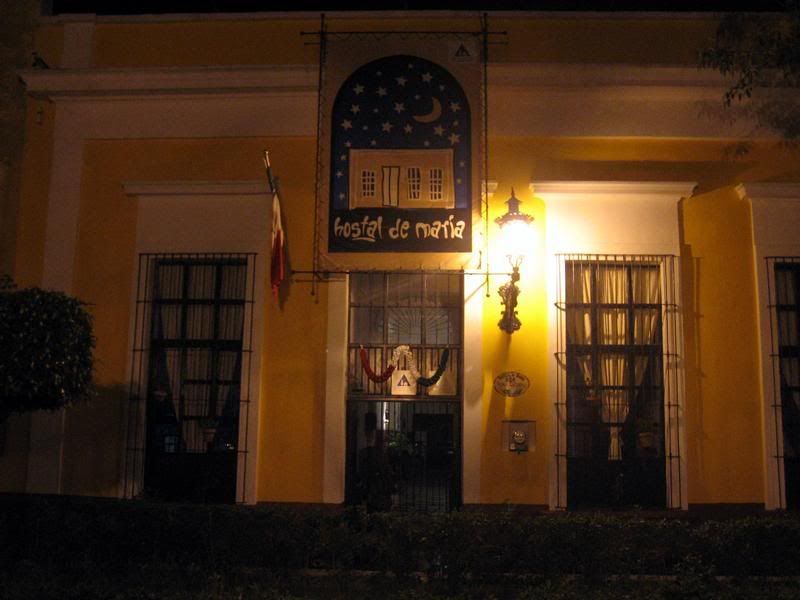
My hotel, Hostal de Maria near the main square of Guadalajara for $14. Very clean and a laundry load cost $4. They also had free internet.
Next: Day 10 - 11, Melaque and Zihuatanejo
Ride Report Index


No comments:
Post a Comment